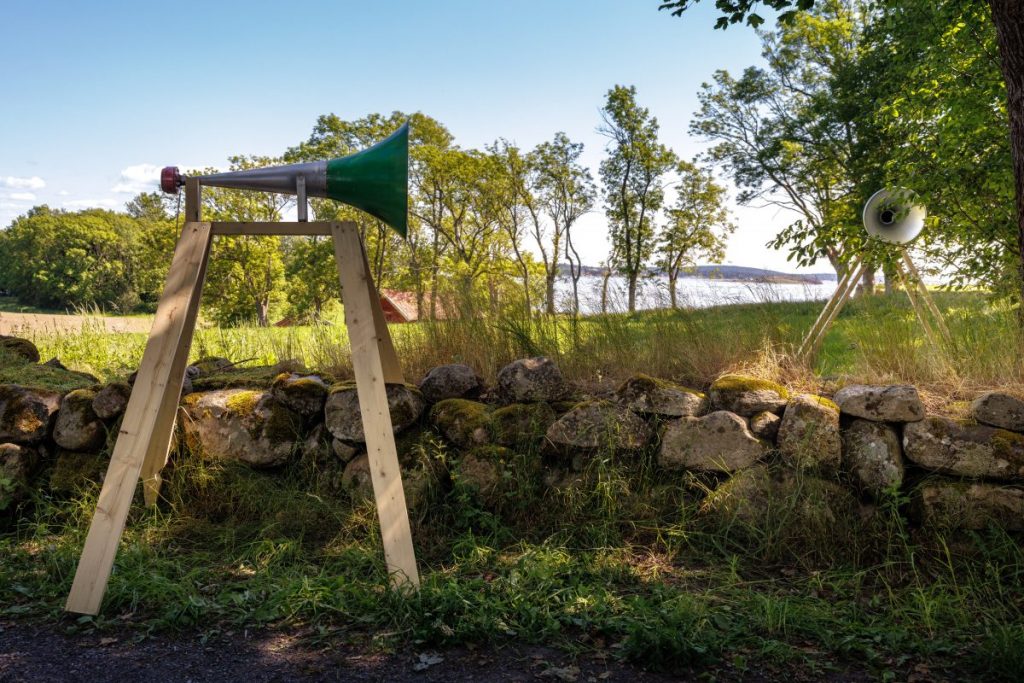How the Norwegian Biennale Momentum 13 sensitively transforms an idyllic holiday island into an exciting art trail with video and sound installations
Art biennials have been springing up like mushrooms for years, and film and video installations are almost always part of the program. Founded in Norway 27 years ago, "Momentum" is already a classic. Northern Europe's oldest biennial is not only a meeting place for the Scandinavian art scene but also a springboard for international careers. Leading multimedia artists such as Natalie Djurberg, Ragnar Kjartansson, and Olafur Eliasson were early participants. Daniel Birnbaum, who curated the first edition in 1998, subsequently became rector of the Städelschule in Frankfurt, later director of the Moderna Museet in Stockholm, and now heads the digital art center Acute Art in London. Stefanie Hessler, co-curator of Momentum 8, now heads the Swiss Institute in New York. The fact that the “Momentum” is still considered an insider tip is probably mainly due to the fact that it does not take place in a trendy metropolis, but in Moss, a crumbling industrial city, and on Jeløy, an island in the Oslofjord.
The title Between/Worlds: Resonant Ecologies already suggests that curator Morten Søndergaard, Professor of Sound and Media Art at Aalborg University in Denmark, wants this biennial to become a resonant space for a sense underrepresented in the visual arts: hearing. In our world overstimulated by visual stimuli, Søndergaard has identified a lack of social listening skills; the exhibition reader offers extensive theorizing about "active listening," "sonic citizenship," "acoustic performativity," and "relational dynamics between human and non-human ecologies."
Hollywood-Phones in the Gift Shop
Fortunately, the works of this year's 34 artists and artist groups are far more accessible and intuitive than the heady catalogue texts. Around half of their works can be experienced at Galleri F 15, a charming contemporary art museum housed in an old mansion on the island.
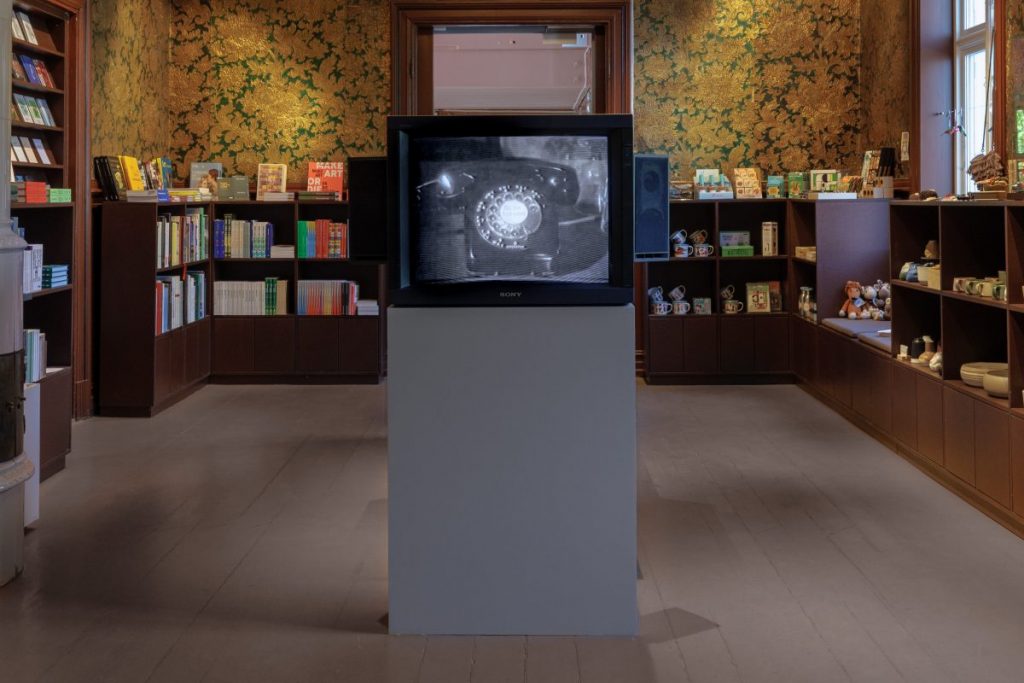
Already in the museum shop, among art catalogues, Scandinavian ceramics and historical embossed wallpaper, one comes across a media art classic from 1995: Telephones by Christian Marclay, precursor to Marclay's award-winning 24-hour work The Clock. For his found-footage video, the US artist has edited scenes of ringing telephones, breathless conversations, and broken connections from Hollywood films to create an endless series of human attempts at communication – using telephones that today seem almost prehistoric. In the gallery space next door: the short film future past perfect pt. 04 (stratus) by German sound and video engineer Carsten Nicolai. Video footage of stratus clouds shot from an airplane condenses into soft-focus structures in a minimalist electronic sound cosmos.
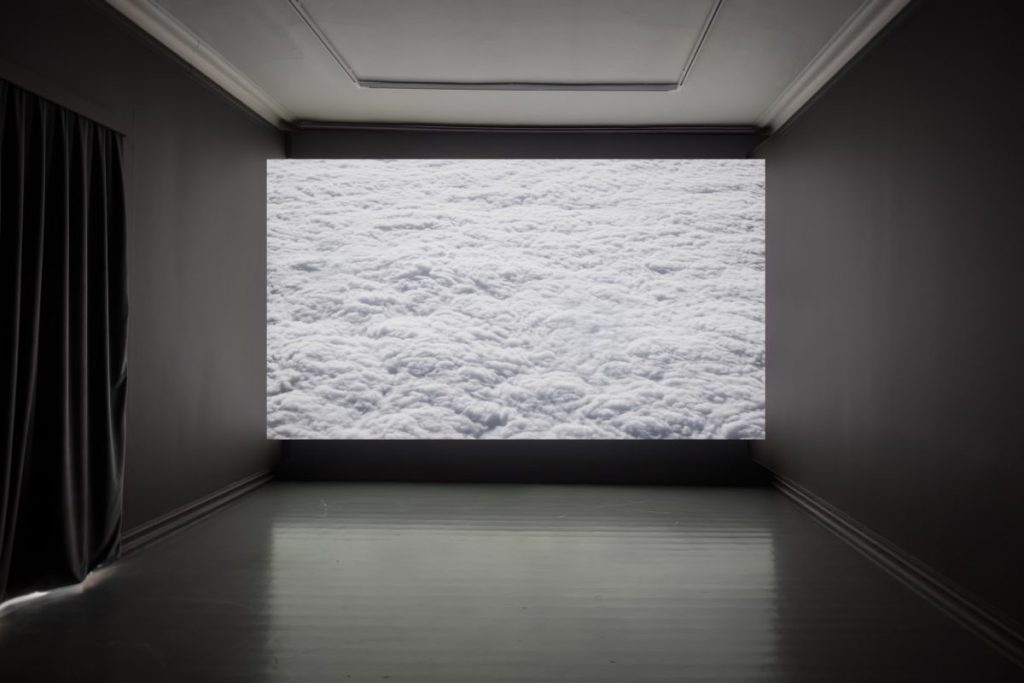
Trumpets and Breathing Sounds
On the first floor of the museum, Christian Boltanski invites you to linger. His meditative three-channel video Misterios (2017) has a running time of 12 hours. We look out to sea. On the left screen, the choppy, gray-blue ocean stretches to the horizon; on the right, a whale skeleton lies on a deserted pebble beach; and in the center, three funnel-shaped metal objects rotate in the wind. They produce unusual sounds, something between breathing noises and tinny trumpets. Boltanski had them set up on a deserted beach in Patagonia and filmed the scene from sunrise to sunset. When the wind whistles through the tin horns, it sounds like whale song. If you look and listen for a while, you'll eventually think you can make out the shadows of the large marine mammals in the waves. The skeleton becomes a memento mori, not only for threatened nature. Boltanski, who repeatedly explored memory, transience, and death in his works, died in Paris in 2021. Misterios is one of his last major video works.
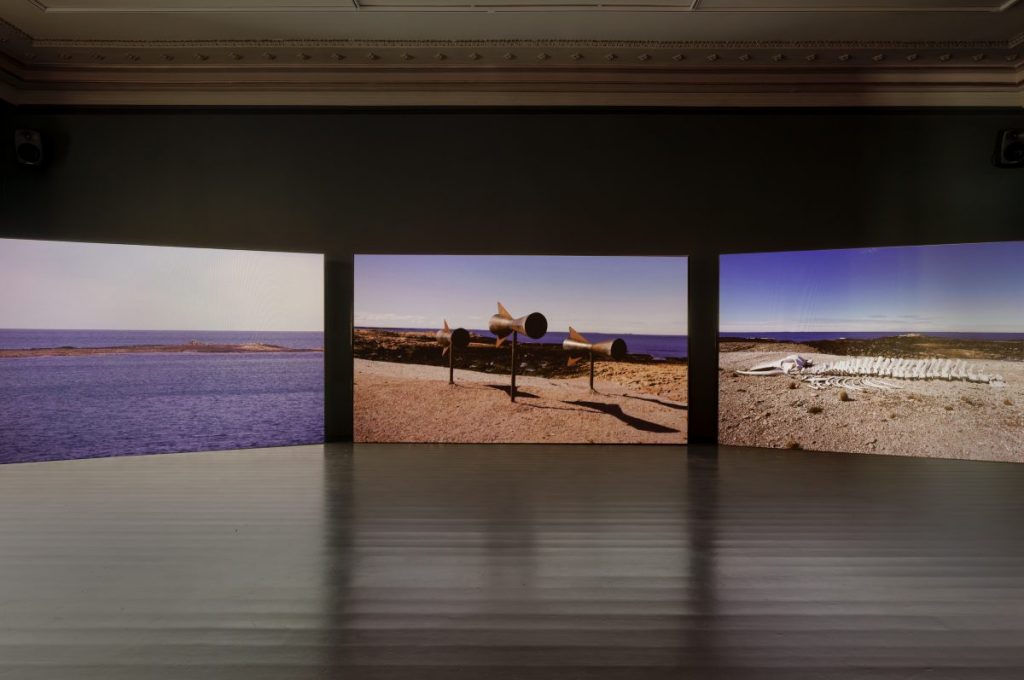
Books for the Wind
Wind also plays an important role in other works of “Momentum.” Danish artist William Kudahl has used wind as a starting point for his video work The Wind is reading . He laid out hundreds of books on the beach and let the wind flicker through them. He was inspired by a scene from Die Farbe des Granatapfels, a 1969 film classic about the life of the Armenian poet Sayat-Nova. Kudahl's video is simple, poetic, and allegorical. What if the wind could read and carry world knowledge around the Earth and into the universe? For his book "Reading the Wind," which accompanies the film, the artist searched archives for names for wind: the hot, dusty wind in North Africa is called "samoon," the Swiss call the spring wind "snow-eater," and the Australians call "cockeyed bob" the thunderstorms that hit the west coast starting in December. The audience is welcome to leaf through the book and even take a copy home with them.
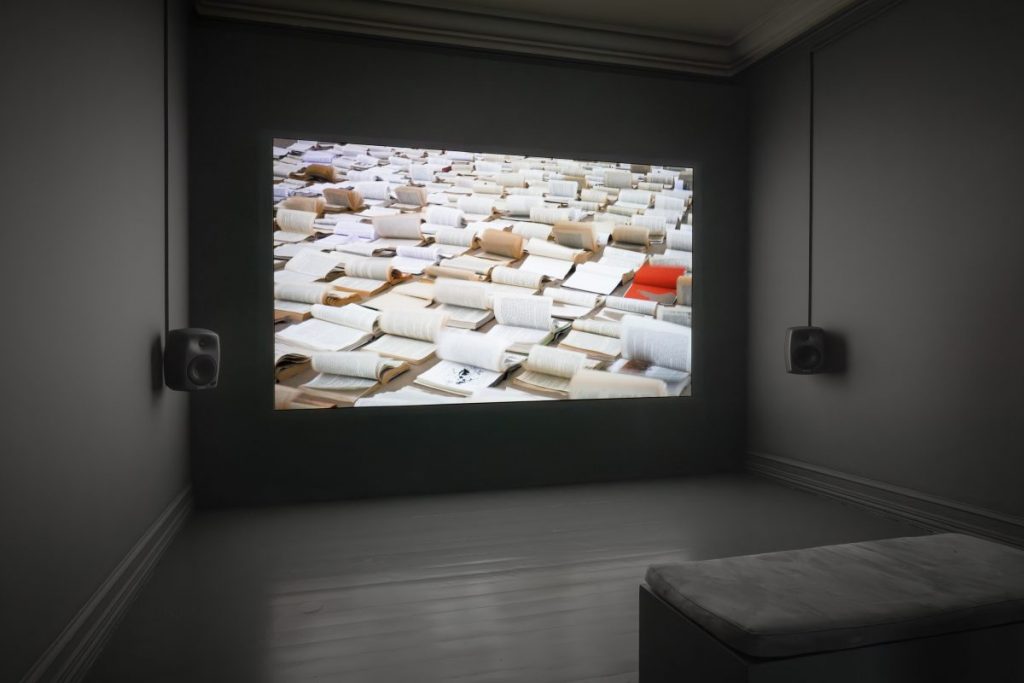
The Biennale encourages close listening and observation, breaking with common exhibition conventions. There are artistic interventions in the rainwater basin, the visitor parking lot, and even the museum restrooms. Copenhagen artist Arendse Krabbe fills the space with the sound work We are all fish. GGurgling sounds from wells, drains and sewage treatment plants are intended to remind us of vital circulatory systems – and also of the fact that we are actually all made almost entirely of water.
In many contributions to "Momentum," ecological themes and observations of nature are interwoven with personal narratives. Since several artworks are installed in the heart of nature—along hiking trails, deep in the forest, next to horse pastures and beaches—the Biennale's itinerary becomes a journey of discovery. At the edge of a hiking trail to the beach, one hears voices ringing out of an ear trumpet beneath an old tree. Those who sit down on the stone wall to listen will hear Stephanie Loveless tell the story of the Norwegian maple tree from her New York neighborhood: In the 18th century, when New York's urban trees were attacked by a parasite, the robust tree species was brought to America from Scandinavia. It has since spread so widely that it is considered invasive. A tree is first brought in as a helper and then labeled an unwanted immigrant—the artist plays with such associations with current American politics in her sound work Spisslønn/Norway Maple.
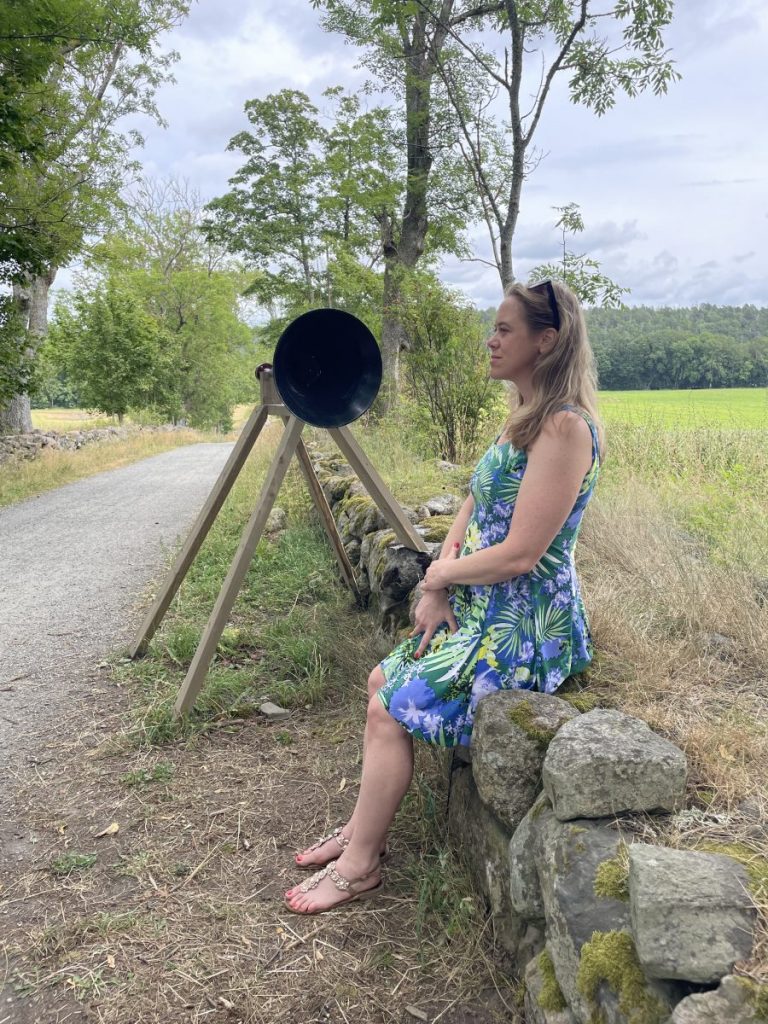
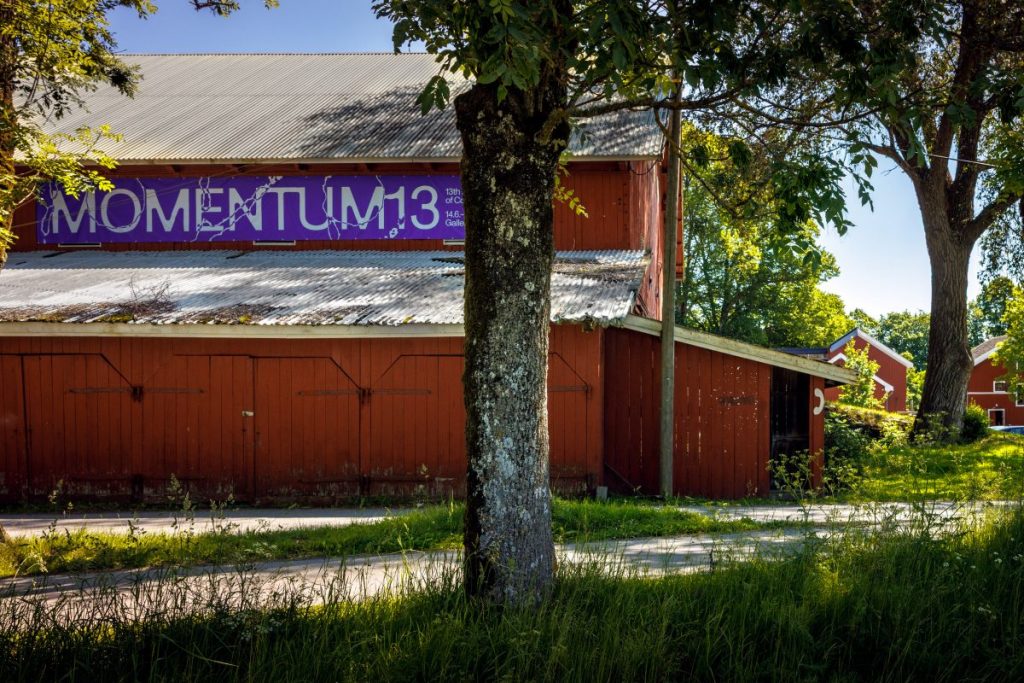
The hiss of grenades in the forest
Janet Cardiff and George Bures Miller also know how audio art can fuel the cinema in the mind. The Canadian duo is known for their immersive multimedia installations. On the island of Jeløy, the artists have transformed a small forest near the water into the stage for their audio opera FOREST (for a thousand years…) Tree stumps serve as seating, while a 28-minute surround sound composition blasts the summer resort audience from hidden speakers. At first, all one hears is the sound of the wind and birdsong, mingling with the cries of the seagulls on site. Then hammering noises join in, man-made noises, a train thundering invisibly through the forest. Then silence again, birds, horse hooves, soldiers' boots, scraps of voices, commands. Suddenly, gunshots, airplane engines, explosions, the hiss of grenades, bombs exploding. Then it becomes quiet again, nature taking over the acoustics. At the end, bell-clear voices sing a sadly beautiful requiem, while the treetops tremble in the sunlight, and dramatic images of land grabbing, war, and the fatal spirit of progress echo before the mind's eye.
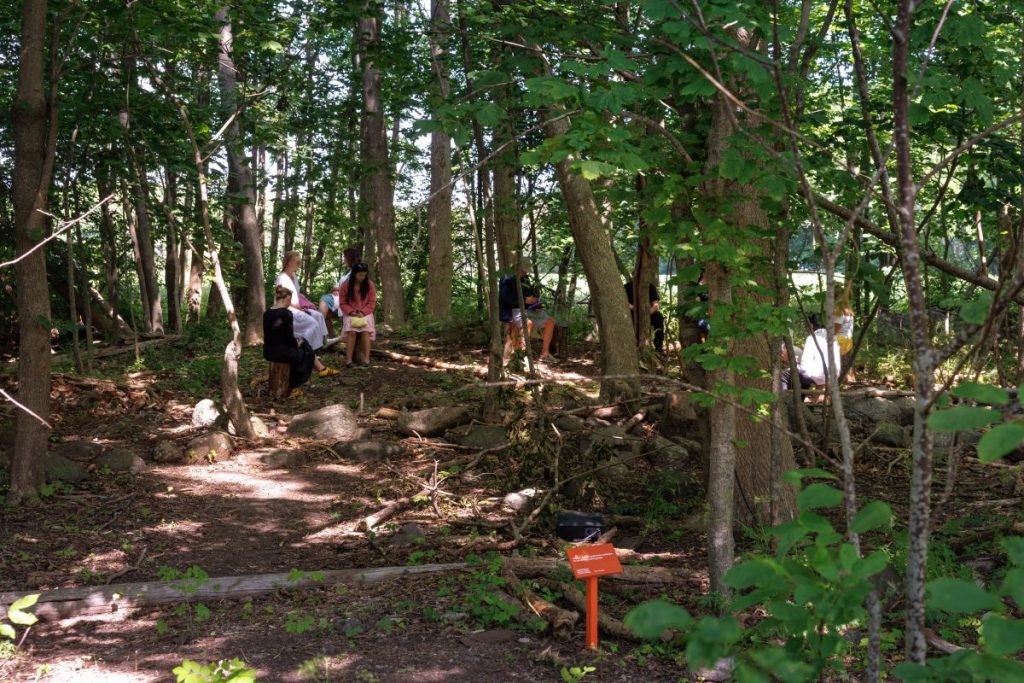
How unexpected existential experiences lurk in Norway's Bullerbü idyll, and how surprising spaces for thought and hearing are opened with sensitivity and polyphonic art: It is moments like these that make Momentum13 so special, without any didactic finger-wagging.
The 13th Nordic Biennale MOMENTUM13 runs until October 12, 2025, in Moss and on the island of Jeløy, about a 30-minute train ride from Oslo. Info: https://momentum.no/momentum-13/
